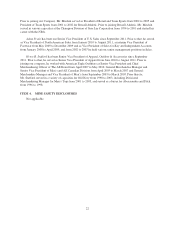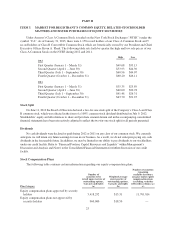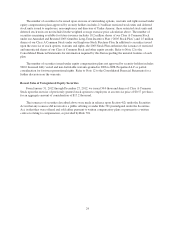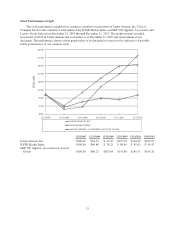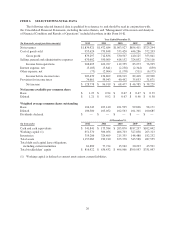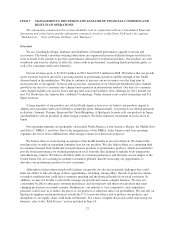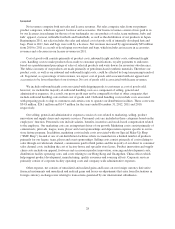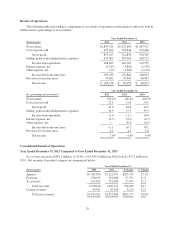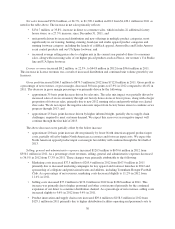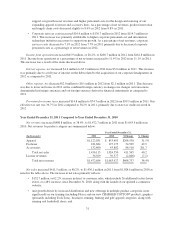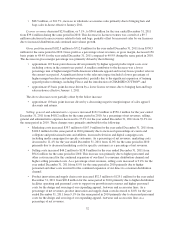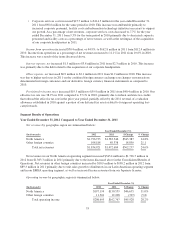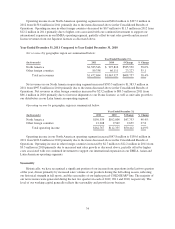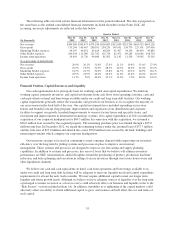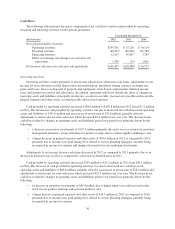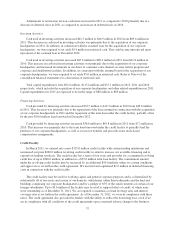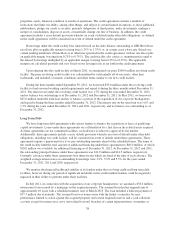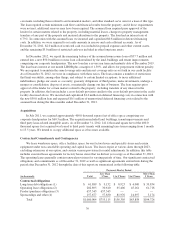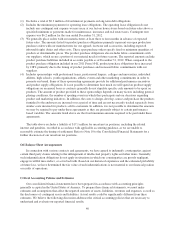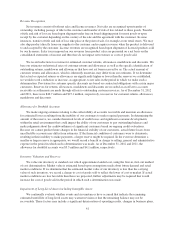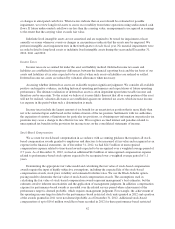Under Armour 2012 Annual Report Download - page 40
Download and view the complete annual report
Please find page 40 of the 2012 Under Armour annual report below. You can navigate through the pages in the report by either clicking on the pages listed below, or by using the keyword search tool below to find specific information within the annual report.• $88.5 million, or 201.7%, increase in wholesale accessories sales primarily due to bringing hats and
bags sales in-house effective January 2011.
License revenues decreased $2.8 million, or 7.1%, to $36.6 million for the year ended December 31, 2011
from $39.4 million during the same period in 2010. This decrease in license revenues was a result of a $9.7
million reduction in license revenues related to hats and bags, partially offset by increased sales by our licensees
due to increased distribution and continued unit volume growth.
Gross profit increased $182.3 million to $712.8 million for the year ended December 31, 2011 from $530.5
million for the same period in 2010. Gross profit as a percentage of net revenues, or gross margin, decreased 150
basis points to 48.4% for the year ended December 31, 2011 compared to 49.9% during the same period in 2010.
The decrease in gross margin percentage was primarily driven by the following:
• approximate 110 basis point decrease driven primarily by higher apparel product input costs, now
including cotton, in the current year period. A smaller contributor to the decrease was a lower
percentage mix of higher margin North American wholesale apparel and factory house product sales in
the current year period. A significant driver to the sales mix impact included a lower percentage of
higher margin baselayer and underwear product, partially due to the significant expansion of training
apparel product offerings, including Fleece and the introduction of CHARGED COTTON®; and
• approximate 45 basis point decrease driven by a lower license revenues due to bringing hats and bags
sales in-house effective January 1, 2011.
The above decreases were partially offset by the below increase:
• approximate 10 basis point increase driven by a decreasing negative margin impact of sales apparel
discounts and returns.
Selling, general and administrative expenses increased $131.9 million to $550.1 million for the year ended
December 31, 2011 from $418.2 million for the same period in 2010. As a percentage of net revenues, selling,
general and administrative expenses decreased to 37.3% for the year ended December 31, 2011 from 39.3% for
the same period in 2010. These changes were primarily attributable to the following:
• Marketing costs increased $39.7 million to $167.9 million for the year ended December 31, 2011 from
$128.2 million for the same period in 2010 primarily due to increased sponsorships of events and
collegiate and professional teams and athletes, increased television and digital campaign costs,
including media campaigns for specific customers. As a percentage of net revenues, marketing costs
decreased to 11.4% for the year ended December 31, 2011 from 12.0% for the same period in 2010
primarily due to decreased marketing costs for specific customers as a percentage of net revenues.
• Selling costs increased $44.2 million to $138.8 million for the year ended December 31, 2011 from
$94.6 million for the same period in 2010. This increase was primarily due to higher personnel and
other costs incurred for the continued expansion of our direct to consumer distribution channel and
higher selling personnel costs. As a percentage of net revenues, selling costs increased to 9.4% for the
year ended December 31, 2011 from 8.9% for the same period in 2010 primarily due to higher
personnel and other costs incurred for the continued expansion of our direct to consumer distribution
channel.
• Product innovation and supply chain costs increased $32.3 million to $129.1 million for the year ended
December 31, 2011 from $96.8 million for the same period in 2010 primarily due to higher distribution
facilities operating and personnel costs to support our growth in net revenues and higher personnel
costs for the design and sourcing of our expanding apparel, footwear and accessories lines. As a
percentage of net revenues, product innovation and supply chain costs decreased to 8.8% for the year
ended December 31, 2011 from 9.1% for the same period in 2010 primarily due to decreased personnel
costs for the design and sourcing of our expanding apparel, footwear and accessories lines as a
percentage of net revenues.
32


